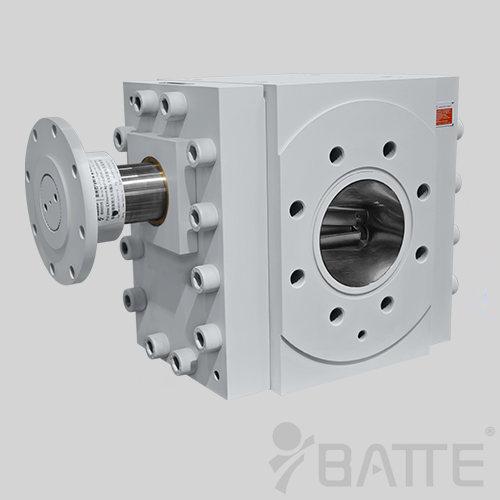
Zhengzhou Batte melt pump manufacturer inspects the fracture position of the pump shaft of the malfunctioning melt booster pump. The metallographic microscope can clearly see that the metallographic structure of the gear shaft is hard and brittle, and the carbide tends to form a network. Once the carbide forms a network structure, the mechanical properties of the material will be greatly reduced.

Melt booster pumps with gear shaft fracture have been used continuously for many years, exceeding the service life promised by the manufacturer of the melt pump. After being subjected to repeated loads for a long time, micro-cracks are formed in the local high stress area, and then gradually propagate from micro-cracks, which become "brittle" like a sudden change. When the stress is far below the strength limit of the material, there is no obvious deformation, and then complete fracture occurs suddenly, which is a typical "fatigue failure". The drive system of the melt booster pump has two protections: the torque limiter and the frequency conversion motor. After the break of the shaft, the motor does not stop and the frequency converter alarm of the melt booster pump is not found, which indicates that the maximum rated current of the motor is not exceeded. At the same time, the torque limiter runs normally and the anti-loosening screw is well connected, which indicates that the torque loaded on the shaft does not reach the set by the torque limiter when the fault occurs. The protective value also proves that the fatigue strength of gear shaft is far lower than the original design value.